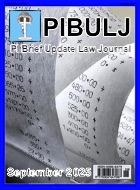Silence Speaks Volumes: Inferences from a Missing Witness - Michael Brooks Reid, Temple Garden Chambers

20/08/25. The Claimant, who was born with congenital heart issues, was 25 when she underwent elective open-heart surgery requiring a re-do sternotomy [cutting through the sternum which had been cut through previously]. In the course of the re-do sternotomy, the lead surgeon, Mr N, unintentionally cut the wall of the Claimant’s aorta, causing catastrophic haemorrhaging.
It took around 24 minutes to establish full cardiopulmonary bypass, during which time the Claimant sustained a serious hypoxic brain injury.
Arteries in the leg which are used for emergency bypass had not been exposed and prepared in advance in the Claimant’s case, notwithstanding a known significant risk of aortic damage requiring bypass.
Instead, following the aortic injury, time was taken exposing the femoral vessels for cannulation. A second surgeon, Mr D, joined Mr N in theatre and attempted cannulation of the femoral artery, during which it dissected [tore].
The Issue
One of the preliminary issues – “issue 2” – was to establish how much time would have been saved had the femoral arteries been prepared in advance. This required determination of whether the arterial dissection was a random occurrence which would have occurred in any event, or whether it was caused or contributed to by the “panic” of the emergency, as pleaded by the Claimant (“the Dissection Issue”).
The Defendant failed to provide evidence of Mr. D, who was the only doctor able to give direct evidence as to the circumstances and cause of the femoral artery dissection. The Claimant invited the Court to draw an adverse inference.
The law
The Judge set out the relevant principles, including a passage adopted by Lord Sumption in Prest v Petrodel Resources Limited and others [2013] UKSC 34, which reads:
“In our legal system generally, the silence of one party in face of the other party's evidence may convert that evidence into proof in relation to matters which are, or are likely to be, within the knowledge of the silent party and about which that party could be expected to give evidence. Thus, depending on the circumstances, a prima facie case may become a strong or even an overwhelming case. But, if the silent party's failure to give evidence (or to give the necessary evidence) can be credibly explained, even if not entirely justified, the effect of his silence in favour of the other party may be either reduced or nullified.”
Given the pleadings made it clear that the Dissection Issue needed to be resolved, the Judge “would have expected” efforts to be made by the Defendant to obtain a witness statement from Mr D. Neither the fact that Mr D was no longer employed by the Defendant nor that he was likely resident in Italy were considered to provide a satisfactory explanation for failing to serve a witness statement on his behalf.
Had the Dissection Issue not already been resolved in the Claimant’s favour, the Judge would have drawn an inference from the Defendant’s failure to produce a witness statement from Mr D; namely that Mr D’s evidence would have supported the Claimant’s case on the Dissection Issue.
Comment
Whilst the Judge’s decision on the adverse inference was strictly obiter, it is nonetheless a reminder of the importance of ensuring that the Court is furnished with all the witness evidence needed to determine the matters in issue.
On the part of Defendant trusts, that is likely to require both a carefully considered legal analysis in the early stages of case preparation, as well as good and timely administrative organisation.
It will be noted that even Mr D having moved abroad was not considered a satisfactory explanation. Therefore, where significant practical difficulties exist in securing a witness’s attendance, a witness statement and a Civil Evidence Act notice should be served.
Image ©iStockphoto.com/STEFANOLUNARDI












![Appeal judge rules that credit hire company has no costs liability following a finding of fundamental dishonesty in personal injury case: RSA v. Fastrack Solutions Limited [2023] 4 WLUK 92 - David Bowden, Erimus Chambers](/content/images/resized/images/stories/carkeys_72_72.jpg)


